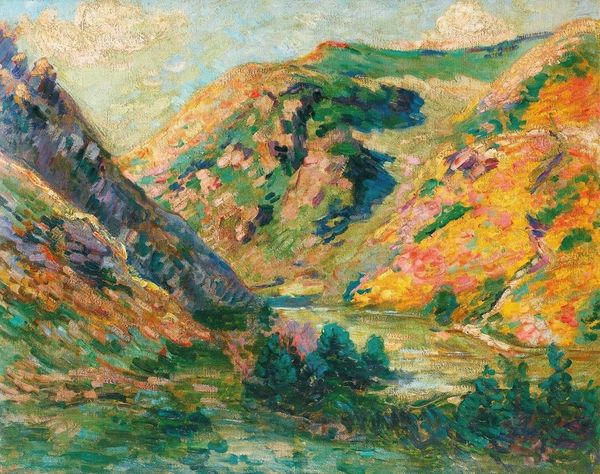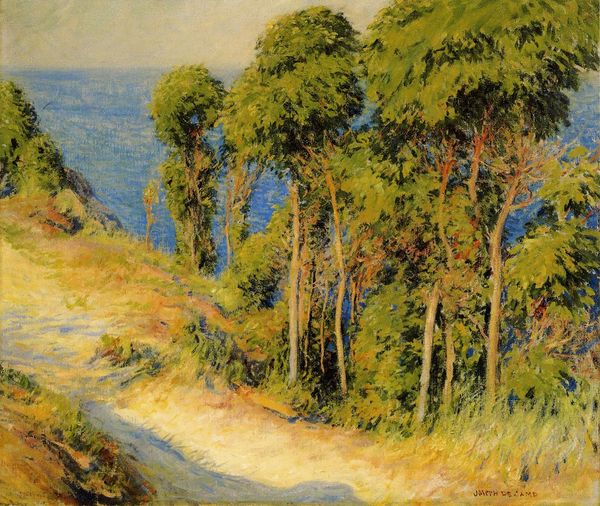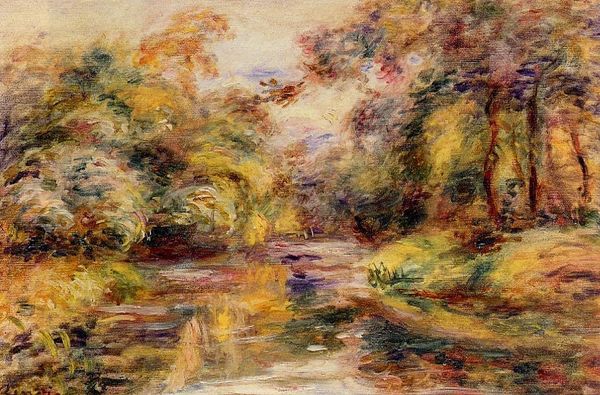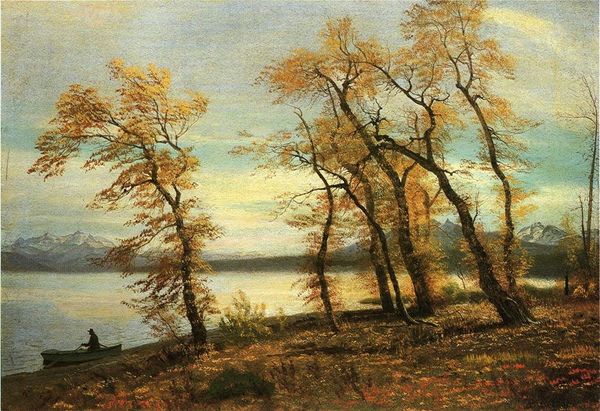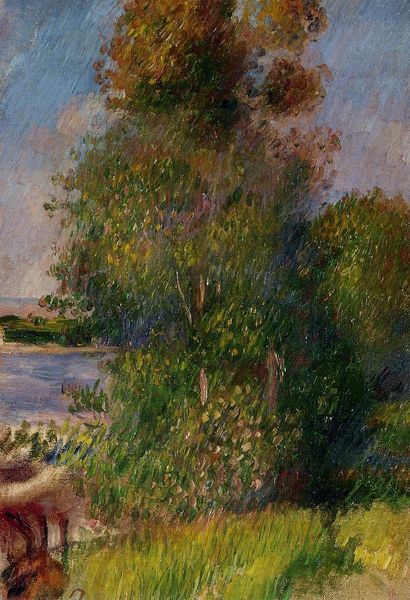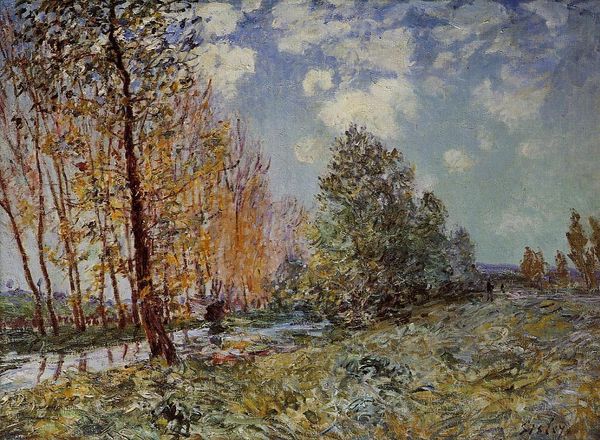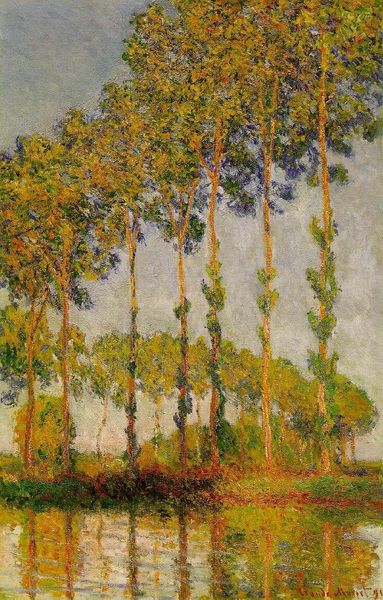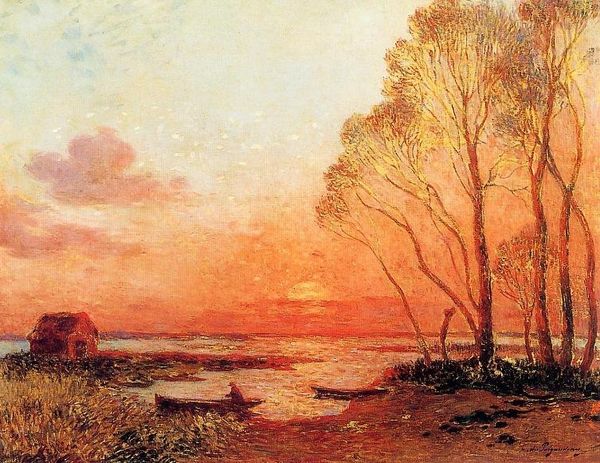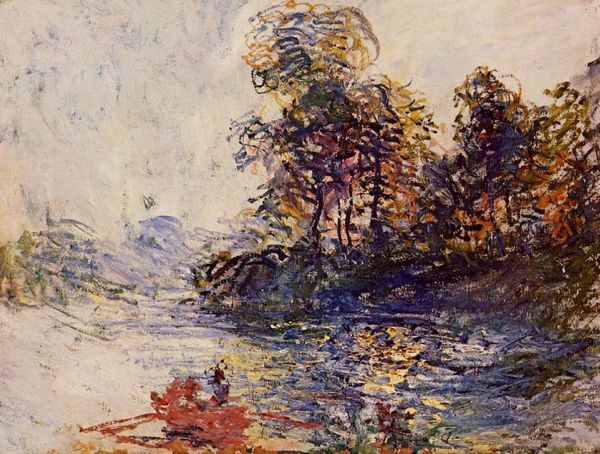
Copyright: Public domain
Armand Guillaumin made this landscape painting with oil on canvas at an unknown date. He was part of the French Impressionist movement. We can read this painting as a comment on the changing social attitudes to the environment in late 19th century France. Guillaumin's contemporary viewers would have understood the symbolic value of the landscape as a space of freedom and retreat from the industrializing cities. The Impressionists were among the first artists to routinely paint 'en plein air', directly from nature. The 'realness' of the landscape was linked to a sense of national identity. There was also an association of this with political progressiveness. The art institutions of the time, such as the French 'Académie des Beaux-Arts', had traditionally prized historical and allegorical scenes. Impressionism and other modern movements created new markets for landscape painting. To fully understand this kind of art, we need to research the cultural values of the time. This includes sources such as literature, philosophy, and the history of the art market. The meaning of art is not simply intrinsic to the art object, but exists in its historical context.
Comments
No comments
Be the first to comment and join the conversation on the ultimate creative platform.
